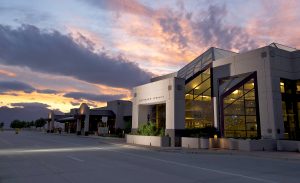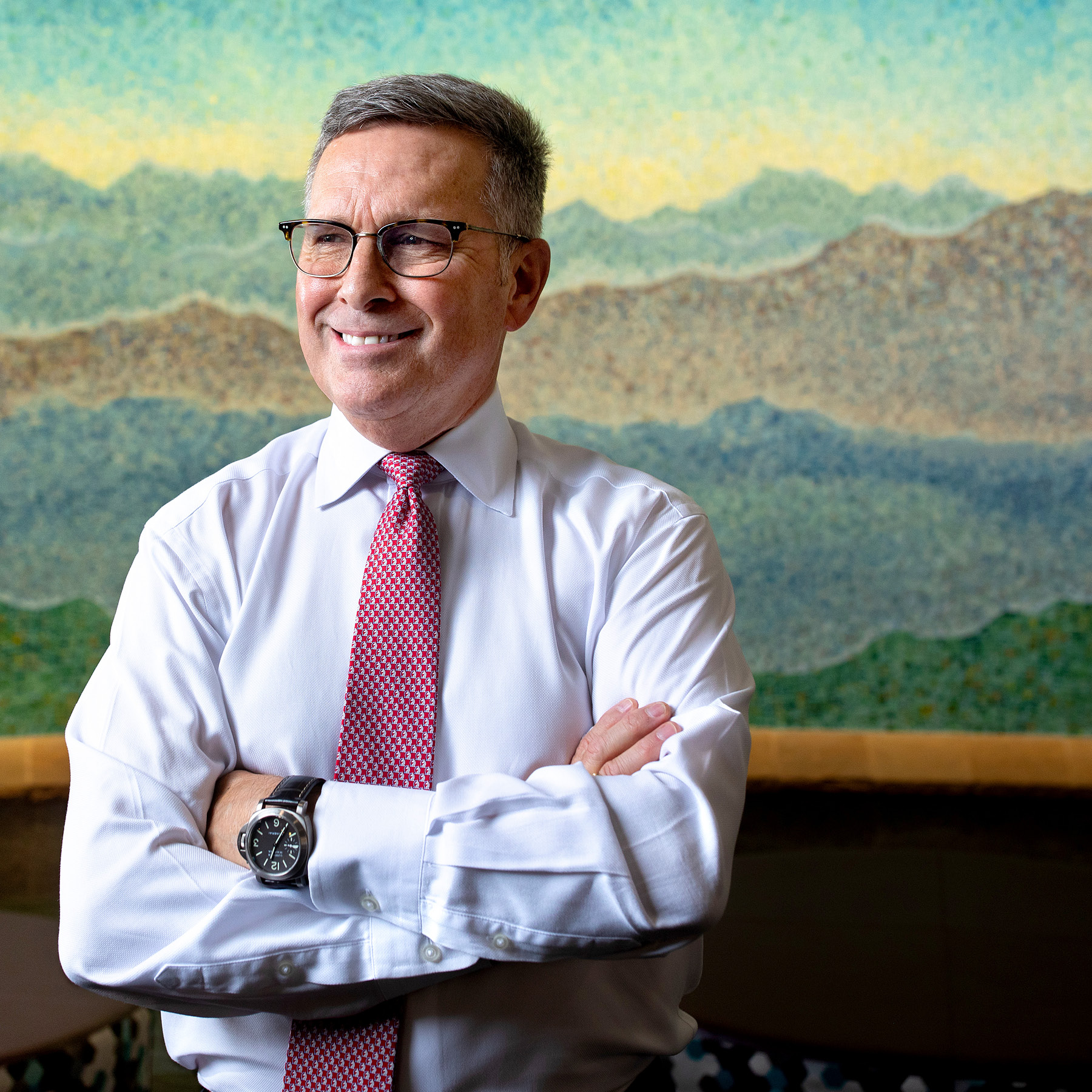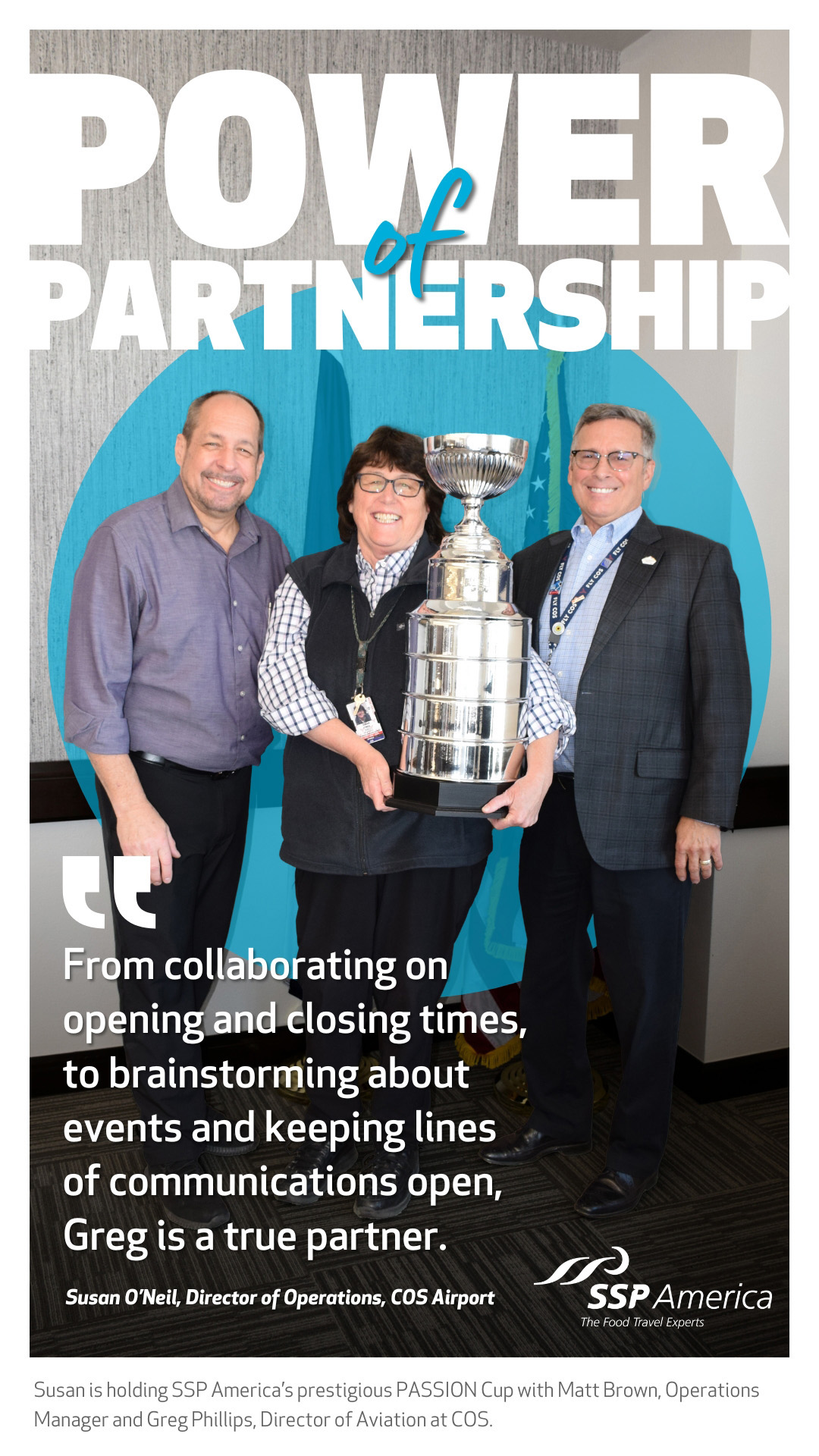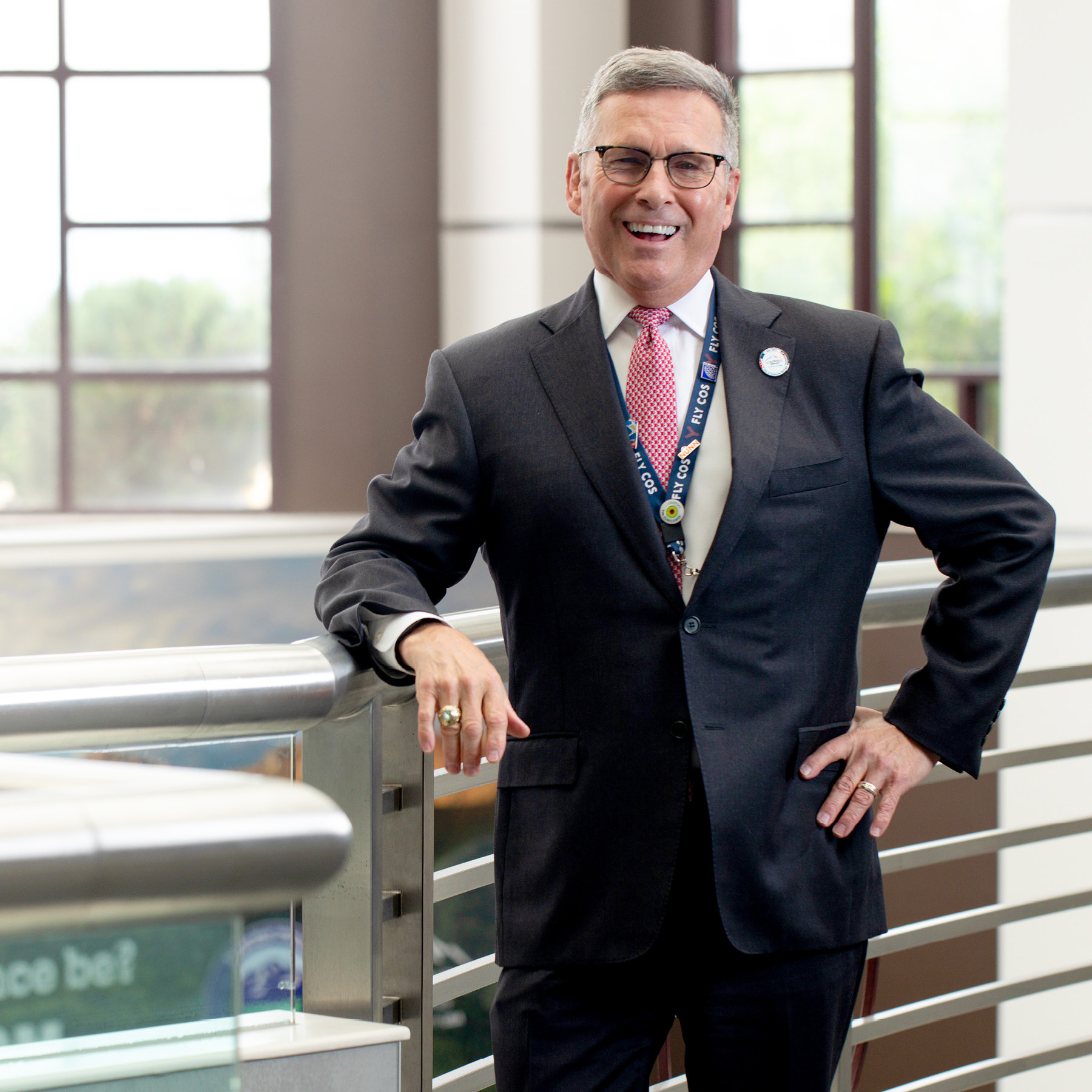Language
You can read the magazine in one of the following languages
Geolocation
You can read the global content or the content from your region


Service is everything for an airport. With millions of travelers passing through every year, expectations are high and the margin for error is low. Just a small mistake has the potential to disrupt significant moments in people’s lives, whether that’s a vacation derailed, a business deal scuppered or a family reunion missed.
With so much on the line, customers of Colorado Springs Airport should count themselves lucky that a leader with service running through his veins is at the helm.
“People like to travel to experience the world and see exciting new places. But it’s not a fun experience all of the time,” Greg Phillips, Director of Aviation at Colorado Springs Airport, tells The CEO Magazine. “So what we are doing, at the very least, is creating a good experience for people.”

Phillips has never been far from a propeller, an engine or a pair of wings, with aviation and service being two central threads of his life. He was raised by a military family, with his father a helicopter pilot in the United States Army.
“I was born around aviation. In fact, I was born when my father was in flight school,” he says.
He decided to follow in the esteemed footsteps of his father to fly helicopters. “I was accepted into the United States Military Academy at West Point, where I spent four formative years and graduated with an engineering degree,” he says.
Phillips says his time in the military helped him gain an insider perspective on aviation. “I was learning how to see and understand aviation in a three dimensional way and how airports and the aviation world interact,” he explains.
After his military career he joined Boeing before moving on to the Federal Aviation Administration. Here, Phillips was given the honor to oversee the Federal Aviation Administration’s part of the construction of Denver International Airport, the largest airport in the United States by area, as Deputy Program Manager.
“It was an incredible project to be a part of, and still stands as one of the largest public works projects that’s been built in the United States,” he says.
“What I learned from the project was that I really enjoyed working with teams, helping them figure out how not to trip over each other, how to schedule and program, how to get things done.”

This experience inspired him to pursue a master’s in organizational development and set up his own business. It was at this time he was offered an opportunity to become an airport manager.
“There’s a saying in aviation that once you’re in aviation, you can never really get out. So I looked at it, thought about it and applied – and here I am five airports later, and it has been fantastic,” he says.
A slogan of Colorado Springs Airport is ‘We are the small one’, and while this may seem like a tongue-in-cheek reference to its behemoth friends on the Front Range – Denver International Airport – it is a source of pride. Phillips explains how its smaller size is one of the airport’s key assets.
“We went through an exercise and we had to consider: Who are we as an airport? We’re not Denver and we’ll never be Denver. But there are things that a smaller airport can do that are tough for a big airport, and that is the convenience, ease of access and the ability to get in and out quickly, as well as offering a more personal touch in addressing our travelers’ needs,” he says.
“I mean, our community raves about the ease of access. They can park in the parking lot and be at their gate in 20 minutes.”
He points out that this level of service is simply not possible in the world’s biggest airports.

“We take pride in that, and we take pride in the fact that our community is our family,” he says.
The airport has an interesting history, Phillips explains. Colorado Springs had existed as a small community airport that was growing incrementally, until its growth exploded in the mid 1990s.
“Around the time Denver International was opening, Colorado Springs had a little airline called Western Pacific, which was a precursor to the ultra-low-fare carriers we see today,” he says. “Our numbers shot through the roof for about two years, and then Western Pacific decided to move to Denver.”
This move, which ultimately saw Western Pacific go bankrupt, ushered in a period of steady decline for Colorado Springs, while Denver steadily expanded.
“But then in 2020 at the height of the COVID-19 pandemic, we got a call from Southwest Airlines, who were interested in coming and taking a look at Colorado Springs,” Phillips says.

He quickly organized an effort to give eight senior executives a two-day tour of the airport and the community, after which they were sold.
“A few weeks later, Southwest announced five routes, 13 daily flights with 2,000 new seats every single day, which was huge for a community of our size,” he says.
This deal has had a transformative impact, acting as a powerful catalyst for growth.
“Southwest is now more than 50 percent of our service and they’re going great,” he says. “We have seen our growth to the point where we are 49 percent above where we were in 2019, while United States airports on the whole are about one percent above where they were.”
This success, he says, would be impossible without the contribution of the people of Colorado Springs.
“Our community, in the end, is what matters,” he says. “We can bring new air carriers and new service in, but if the community doesn’t wrap their arms around it, it won’t be there very long.”
With thoughts of the community at the forefront of everything the airport does, Phillips has decided to focus on making the airport more accessible for all members of its community, which has a special significance in Colorado Springs.
“We have an obligation to take care of all our travelers and we want to do that and do it well,” he says. “We are home to five military bases, and sadly with these bases you get a lot of disabled veterans. After they get out of the military a lot of our service members decide to stay in the area.
“We’re also home to the United States Olympic and Paralympic Committees and half of the national governing bodies for sport, like US Hockey, US Cycling, and US Basketball. So we have a lot of people with restricted mobility that we want to take care of.”

The airport is also cognizant of passengers with hearing impairments.
“We’re putting hearing loops in all the hold rooms, as well as a light thin carpet that keeps the noise down so it’s a little more comfortable when you’re sitting there, but with terrazzo in the movement areas that is easier for wheelchairs and roller bags,” he says. “We’ve also introduced the Hidden Disabilities Sunflower Program to recognize that not all disabilities are visible.”
Phillips is passionate about making Colorado Springs Airport an industry leader in accessibility, and actively engages with the community to see how the airport can do better.
“I sit on an accessibility task force for our community. It’s very interesting to talk to people who have restricted mobility and learn from them,” he says.
“We’re moving forward with the intention to do things that will genuinely help our travelers and guests who are disabled. Nothing will please me more than if I hear from somebody that Colorado Springs Airport is easier and more accessible than any other airport.”
Although Colorado Springs Airport’s main source of revenue is its commercial air operations, it is not the only string to its bow. The scale of its facilities has allowed an impressive diversification.
“It’s a big piece of property. It’s 7,700-plus acres [2,900-plus hectares], which is larger than JFK, Newark and LaGuardia airports,” he says. “We have three runways, including one of the longest commercial public runways in the United States at 13,501 feet [4.12 kilometers]. So we have a lot of capacity.”
Aside from commercial, it has three other pillars to its business model.
First is corporate and general aviation, which covers private planes and aviation learning centers, including its five on-site flight schools.
“This is where people learn the skills and where people gain a passion for aviation,” he says.
“I love our airport as the nexus of aviation because we can support small aircraft as well as large aircraft. You don’t generally see smaller aircraft at big airports like Denver.”
Second is its United States military tenants, Peterson Space Force Base, on the airport’s northern edge.

“Peterson is the home of Northcom, the Northern Command, which is a joint allied command for all of North America – for Canada, Mexico and the United States,” Phillips says. “They’re our largest tenant, and we have a great relationship with them.”
“In lieu of rent, they provide all of our firefighting services that save us around US$2 million per year, another thing that helps us keep our costs low.”
The final pillar is its business park, named the Peak Innovation Park.
“It is currently about 1,600 acres [650 hectares], but it is continuing to grow as we are in the process of purchasing an additional 562 acres [227 hectares],” he says.
The business park was of particular significance to Colorado Springs Airport during the economic crisis of the COVID-19 pandemic.
“When the pandemic came around, we lost 94 percent of our air services, as most airports did. Our airlines were not flying in and out of the airport, so our revenue stream just tanked,” Phillips reflects.
“But with the business park, we had another revenue stream. We realized in the pandemic that the broader your revenue stream is, the greater your ability to manage the economic storms that naturally come.”
Like any great leader, Phillips is acutely aware of the significance of having a great team of people around him that are dedicated to forging good relations.
“A lot of what has made us successful is that I’ve hired a great team to focus on the concept of partnership, and they know how important relationships are,” he says.
These important relationships are with varied partners, including jetCenters of Colorado, SSP America, Nunn Construction and WE O’Neil.
“We’ve always said to our airlines: ‘We are here to make you successful’,” he says. “If the airlines aren’t successful, what do we have?
“That doesn’t mean we want to give away the farm, but we want to listen to them and do what’s fair for both sides. The same holds true for all of our tenants.”
And if there happens to be disagreement, Phillips works it out in a constructive way.
“From time to time, any organization will have issues that need to be worked out. In our case, as an example, we had an issue with one of our concessionaires, so I reached out to their senior management. The issue was quickly resolved, and as a result we have a great relationship that’s only gotten stronger because we had an issue that we resolved in a positive way,” he says.
“It proves that these are the rainmaker moments. We always start off with a good relationship and my goal is always that when we finish a project, we shake hands and we’re still friends.
“I’ve had conversations with some of our tenants and partners who have said Colorado Springs is a better partner than other airports they work with. And I don’t take that lightly.”
For Phillips, the key to success in the aviation business is to never lose sight of the customer.
“I believe in service, and I believe it’s our primary mission” he says. “I believe that we have a responsibility to contribute at a bigger level than just serving ourselves and making as much money as we can.
“What I love about working in the airport industry is that Colorado Springs Airport is the gateway to our community. It’s also the biggest economic engine in our community.”

The privilege to be able to go to work every day with the aim of bringing people together is not lost on him.
“Airports are more than just a facility that operate airplanes in and out; they introduce people to different communities. They send people around the world for exciting adventures and connect people for business. Airports bring people together, and I want our staff to remember that,” he says.
“Just watch people coming off the plane and be greeted by family and you’ll remember that this is an exciting place to work.
“It is a great place that connects our community and opens the world to Colorado Springs.”